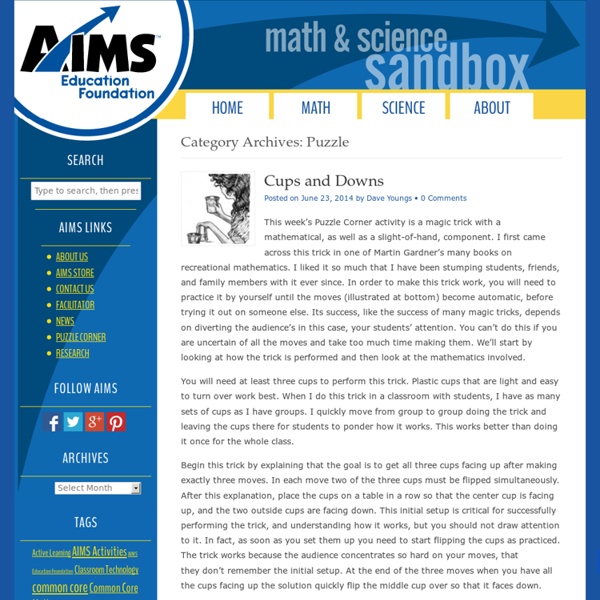AIMS Puzzle Corner: Free Math Puzzles

Visual Fractions - A Fraction Tutorial
QR Code Generator - create QR Codes online [business card, t-shirt, mug, 2D barcode, generate QR-Code] - goQR.me
Observation of Learning, Teaching and Assessment 2012-13 | Leeds City College Vision for Learning
Please find the resources and information to support the 2012-13 Observation of Learning, Teaching and Assessment (OLTA) detailed below. Practitioner OLTA Briefing PowerPoint. The PowerPoint plays quite quickly, to pause the show ‘hover’ the cursor at the bottom left hand side of the viewing window and pause as necessary. The screen can also be maximised by clicking the [ ] symbol at the bottom right hand side of the screen. Link to the PowerPoint which can be downloaded and saved. Observation briefing 2012-13 OTL Practitioner Guide OTL Guide 2012-13 Final 1.0 without hyperlinks Contents: Introduction 1. 2. 3. Criteria for Outstanding Learning, Teaching and Assessment The following grid is based on the Ofsted 2012 Common Inspection Framework (CIF) and is a handy reference tool for assessing the quality of learning, teaching and assessment. Observation of Teaching LCC Revised Observation Form Supporting Documents 1. Support Document 1 – Eg Session Plan 1 2. Support Document 2 – Eg Session Plan 2 3. 4.
The Home of Speed Math and Smart Math
s Guide Interactive Math Resources
Interactive Math Websites, Math Websites for Interactive Whiteboards Interactive Math Websites for Interactive Whiteboards Manipulatives National Library of Virtual Manipulatives Virtual manipulatives related to the NCTM standards. Big Online Calculator Use to teach students how to use a calculator. eManipulatives Base ten blocks, counters, number lines, etc... Interactivate Lots of resources for math lessons. Numbers Wash Line Put numbers in the correct order. Number Recognition Launch the Spaceship Students must click on the correct number to launch a spaceship/ Number Sequence Students pick the correct number to complete a sequence. Two Digit Numbers Students match names of two digit numbers. Numberlines Students guess patterns on the numberline. Odd or Even Students sort numbers as odd or even. Number Track Place numbers in correct order. Caterpillar Ordering and Sequencing Students put number in the correct order to put a caterpillar back together. Spooky Sequences Count by 2, 5, 10 Addition
Bloom's Taxonomy - UCF Faculty Center for Teaching and Learning
Introduction Bloom's taxonomy was developed to provide a common language for teachers to discuss and exchange learning and assessment methods. Specific learning objectives can be derived from the taxonomy, though it is most commonly used to assess learning on a variety of cognitive levels. The goal of an educator using Bloom's taxonomy is to encourage higher-order thought in their students by building up from lower-level cognitive skills. Knowledge Definition Rote factual knowledge of specific terminology, ways and means (i.e., conventions, trends, classifications and categories, criteria, methodology), universal axioms and/or abstractions accepted by the field or discipline (principles and generalizations, theories and structures). Comprehension Definition Understanding the meaning of information and materials. Application Definition Using information and materials to solve new problems or respond to concrete situations that have a single or best answer. Analysis Synthesis Evaluation
Mathwire.com | June 2011
Eide Neurolearning Blog
All Math Games
The Differentiator
Try Respondo! → ← Back to Byrdseed.com The Differentiator The Differentiator is based on Bloom's Taxonomy, Kaplan and Gould's Depth and Complexity, and David Chung's product menu. Try It In: French Dutch • Tweet It • Like Byrdseed • Pin It Students will judge the ethics of the [click to edit] using a textbook and create an essay in groups of three. Revised Bloom's Taxonomy adapted from "A Taxonomy for Learning,Teaching, and Assessing: A Revision of Bloom's Taxonomy of Educational Objectives" by Anderson and Krathwohl Depth and Complexity adapted from The Flip Book by Sandra N. Depth Big Idea Unanswered Questions Ethics Patterns Rules Language of the Discipline Essential Details Trends Complexity Multiple Points Of View Change Over Time Across the Disciplines Imperatives Origin Convergence Parallels Paradox Contribution Key Words Consequences Motivations Implications Significance Adapted from David Chung and The Flip Book, Too by Sandra N. Group Size One Two Three Four
Number Farm
Related:
Related:



